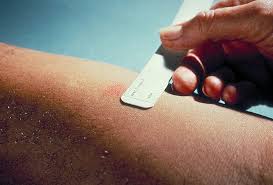Abstract
OBJECTIVES: To assess relationships among the effects of HIV on hemophilic children and adolescents’ immunologic parameters and vaccine-related serology.
METHODS: We analyzed data from extensive baseline immunologic evaluations of 207 HIV antibody-positive (HIV+) and 126 HIV antibody-negative (HIV-) hemophilic children and adolescents.
RESULTS: HIV+ and HIV- participants differed significantly in T-lymphocyte subpopulation numbers, immunoglobulin levels, and seroprevalence rates for diphtheria toxoid, measles, and mumps antigens, IgG levels, IgM levels, and serologic titers to vaccine antigens showed little correlation with T-cell parameters. Proportionately more HIV+ participants were nonreactive to each and all of a panel of 7 skin test antigens (71% vs 28% anergic, RR 2.6). The odds of anergy increased 1.6 times for every decline of 200 CD4+ cells/microliters.
CONCLUSIONS: HIV had significant, largely independent T- and B-lymphocyte effects on this pediatric cohort.
Jason J, Murphy J, Sleeper LA, Donfield SM, Warrier I, Arkin S, Evatt B, Gomperts ED
Am. J. Hematol. 1994 May;46(1):29-35
PMID: 8184874
Jason-Amer-J-Hematol-1994-Immune-and-seologic-HIV1